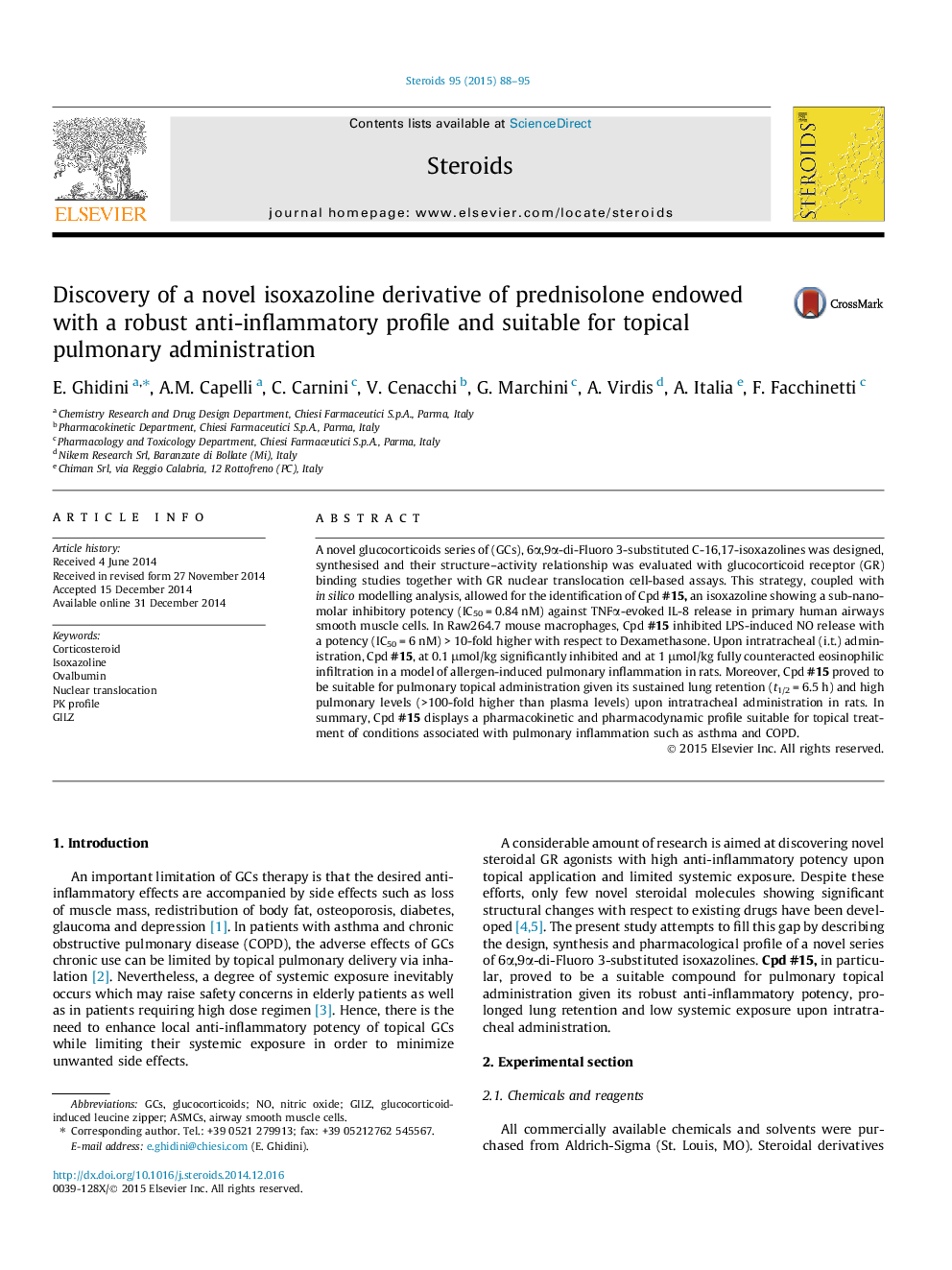| Article ID | Journal | Published Year | Pages | File Type |
|---|---|---|---|---|
| 2027565 | Steroids | 2015 | 8 Pages |
•Synthesis of novel isoxazolines derivatives of prednisolone and 6-α-fluoro-isoflupredone.•The isoxazolines were characterized in vitro for their anti-inflammatory potency.•Cpd #15 highly effective as anti-inflammatory agent upon topical pulmonary administration.
A novel glucocorticoids series of (GCs), 6α,9α-di-Fluoro 3-substituted C-16,17-isoxazolines was designed, synthesised and their structure–activity relationship was evaluated with glucocorticoid receptor (GR) binding studies together with GR nuclear translocation cell-based assays. This strategy, coupled with in silico modelling analysis, allowed for the identification of Cpd #15, an isoxazoline showing a sub-nanomolar inhibitory potency (IC50 = 0.84 nM) against TNFα-evoked IL-8 release in primary human airways smooth muscle cells. In Raw264.7 mouse macrophages, Cpd #15 inhibited LPS-induced NO release with a potency (IC50 = 6 nM) > 10-fold higher with respect to Dexamethasone. Upon intratracheal (i.t.) administration, Cpd #15, at 0.1 μmol/kg significantly inhibited and at 1 μmol/kg fully counteracted eosinophilic infiltration in a model of allergen-induced pulmonary inflammation in rats. Moreover, Cpd #15 proved to be suitable for pulmonary topical administration given its sustained lung retention (t1/2 = 6.5 h) and high pulmonary levels (>100-fold higher than plasma levels) upon intratracheal administration in rats. In summary, Cpd #15 displays a pharmacokinetic and pharmacodynamic profile suitable for topical treatment of conditions associated with pulmonary inflammation such as asthma and COPD.
